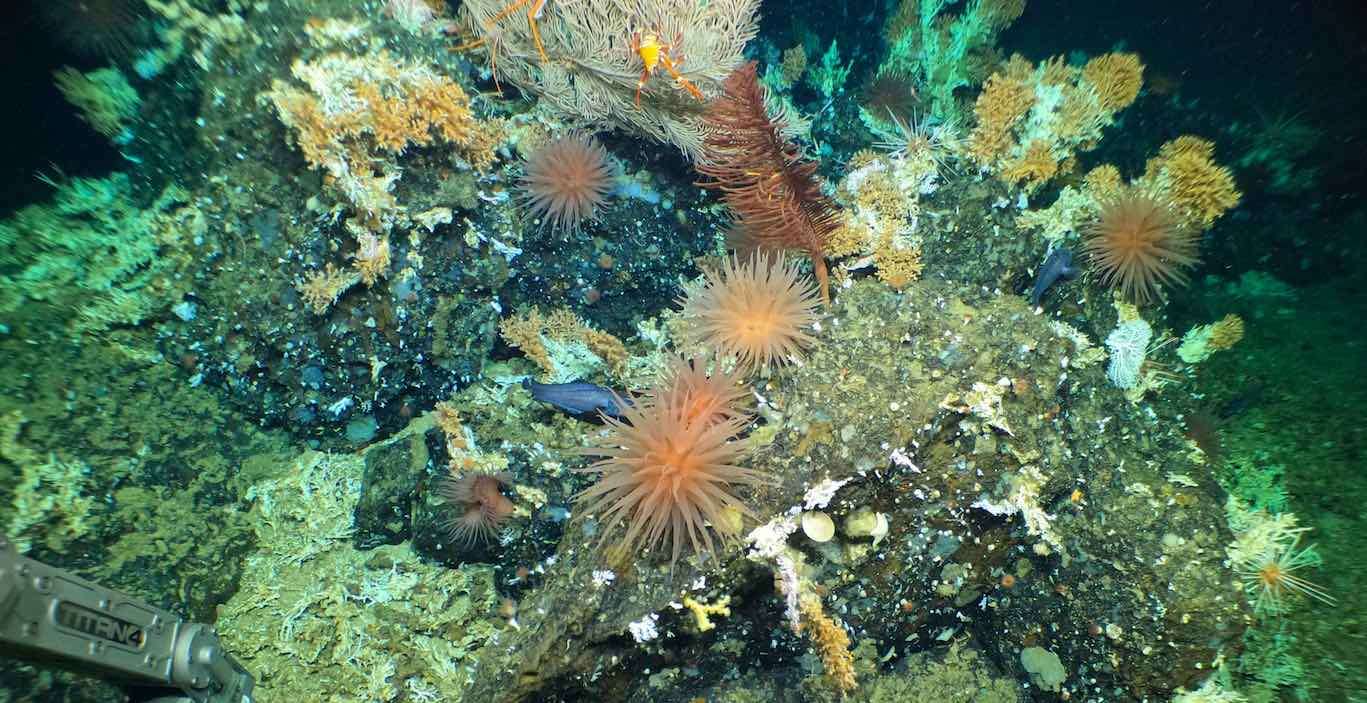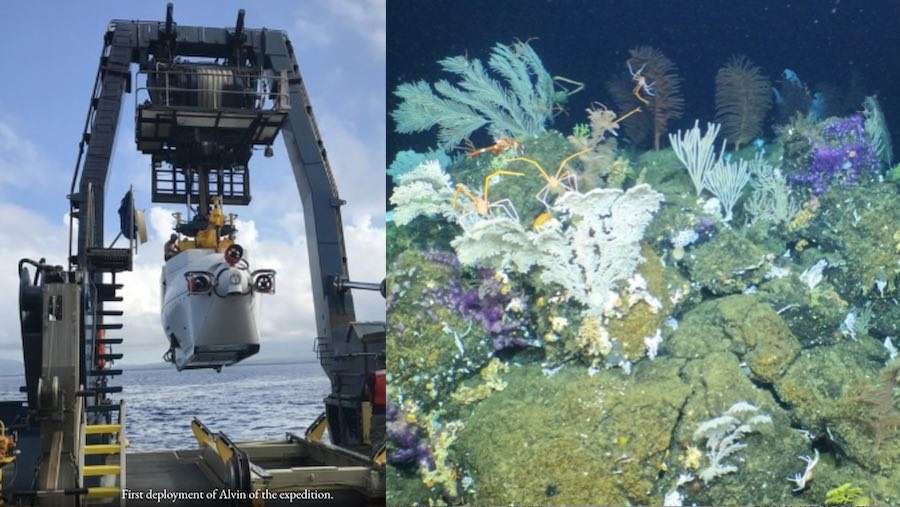Chihuahua Slightly Taller Than a Teacup is Named World's Shortest Dog
She comes from a lineage of tiny and relatively calm Chihuahuas, with her ancestor Miracle Milly, being the previous World Record holder.

Scientists have discovered extensive, ancient deep-sea coral reefs within the Galápagos Marine Reserve in Ecuador-the first of their kind ever to be documented inside the marine protected area since it was established in 1998.
The reef supports a breathtaking mix of deep marine life found at a depth of nearly 2,000 feet below the surface (400-600 meters deep).
Cresting the ridge of a submerged volcano, and stretching over several kilometers, the impressive reef structure was discovered by Dr. Michelle Taylor (University of Essex, UK) and Dr. Stuart Banks (Charles Darwin Foundation, Ecuador) while diving in the human-occupied vehicle known as Alvin. It was the first time Alvin had explored this region of the Reserve.
"The reef is pristine and teeming with life - pink octopus, batfish, squat lobsters and an array of deep-sea fish, sharks, and rays," said Taylor. "This newly discovered reef is potentially an area of global significance - a canary in the mine for other reefs globally - a site we can monitor over time to see how a pristine habitat evolves with our current climate crisis."
The submersible vehicle recently received an ultra-high definition 4K video imaging system, as well as enhanced sampling capabilities, which allowed for the stunningly clear video of the newly discovered reef sites, as well as the delicate sampling required of the reef.
Prior to this discovery, Wellington Reef off the coast of Darwin Island in the far north of the archipelago was thought to be among the few structural shallow coral reefs in the Galápagos Islands to have survived the 1982-83 El Nií±o event. The new discovery shows that sheltered deep-water coral communities have likely persisted for centuries in the depths of the marine reserve, supporting rich, diverse, and potentially unique marine communities.
A marine geologist and researcher at the Woods Hole Oceanographic Institution, Daniel Fornari, co-led the expedition. Fornari, Taylor, and Banks, are part of an international group of scientists on the Galápagos Deep 2023 expedition aboard the US Navy research vessel Atlantis, mapping the mysteries with Alvin (also owned by the Navy, but operated by Woods Hole).

"21st-century seafloor mapping technologies and imaging techniques reveal the beauty and complexity of the volcanic and biological processes that makes the Galápagos so unique," said Fornari, who has mapped and sampled the marine environment in the Galápagos for over 20 years. (See some of the video below.)
"The captivating thing about these reefs is that they are very old and essentially pristine, unlike those found in many other parts of the world's oceans," said Dr. Banks. "This gives us reference points to understand their importance for marine natural biodiversity heritage, connectivity with regional marine preserves (MPAs), as well as their role in providing goods and services such as carbon cycling and fisheries. It also helps us reconstruct past ocean environments to understand modern climate change."
Taylor noted the importance of this discovery for deep sea habitats: "The discovered reef is novel for several reasons - in shallow reefs where finding 10-20% of coral cover would be considered a relatively unhealthy reef, in the deep-sea this is the norm. Dead coral skeletons making up the remaining 80-90% still provide homes for a huge diversity of life, which is less reliant on the live sections of coral. However, the reefs we've found in the last few days have 50-60% live coral in many areas, which is very rare indeed."
And, it's very likely there are more reef structures across different depths waiting to be explored.
Scientific findings such as this help inform effective management and conservation actions. The discovery also comes at a time when the Eastern Tropical Pacific countries of Panama, Costa Rica, Colombia, and Ecuador are actively collaborating to create protected marine corridors that cross borders.
Newly protected sea territories, such as the Hermandad Marine Reserve, now connect seamounts in Ecuadorian waters to offshore marine environments such as Costa Rica's Cocos Island National Park-all to protect foraging grounds and migratory routes for marine life, and enforce responsible fisheries.
"This groundbreaking discovery reaffirms our determination to establish new marine protected areas in Ecuador and to continue promoting the creation of a regional marine protected area in the Eastern Tropical Pacific," declared Ecuador's Minister of Environment, Jose Antonio Dávalos.
"The richness of the yet explored depths of our ocean is another reason to strive towards achieving the commitments of the Global Ocean Alliance 30×30, which aims to protect at least 30% of the world's oceans by 2030, aligning sustainable economic activities with conservation."
SAIL the Reef Discovery to Ocean Lovers on Social Media…
Be the first to comment